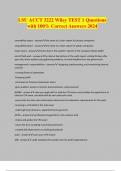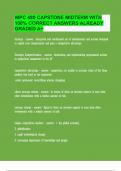Samenvatting
Samenvatting_Architecture_theory and criticism: Veronique Patteeeuw
In this document, you can find a summary of the 6 lessons that Veronique Patteeuw has given in the lessons "Architecture, theory and criticism". The first pages are about chapter 1: Acceleration, after that, you can find chapter 2: Commons, then chapter 3: Participation, after that is chapter 4...
[Meer zien]












